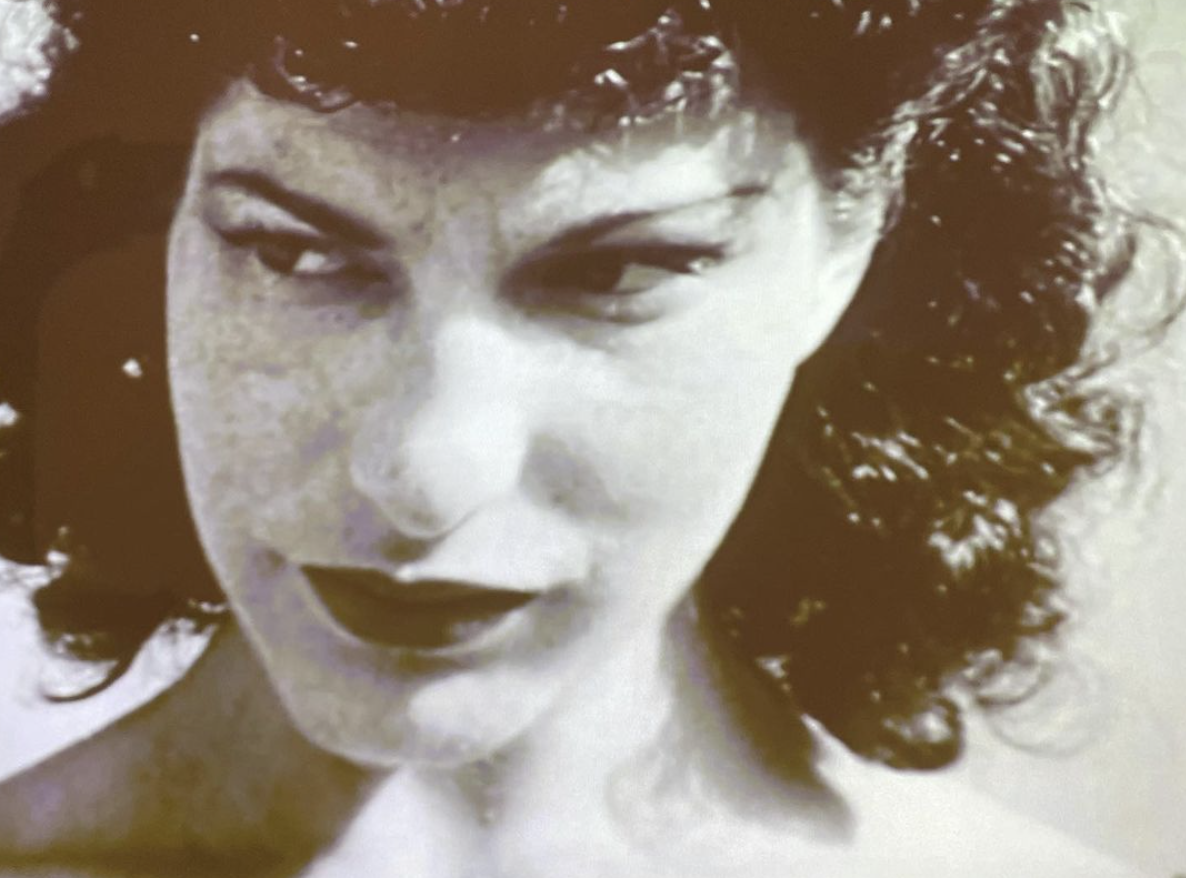This is Maya Deren, the artist who transcended boundaries, friends with Dorothea Tanning and Max Ernst and Marcel Duchamp, but who very much went her own way. Born in the Ukraine, she lived in the US as a child and teenager when her parents emigrated, then went to Smith, NY and LA. She danced (for Katherine Dunham), she made films (which were very influential), she wrote, she was very much a part of the avant garde.
This still from her 1944 film, At Land, part of the Met's Surrealism Without Borders exhibition, captures some of her moxie. It was filmed in Amagansett. It's subtext drifts with the sand and sea around the notion of depaysement, or homelessness. She did not like to be lumped in with the Surrealists but she understood she shared some of their concerns around poetic and dream states.
Deren died at 44 in 1961 from a brain hemorrhage. She became addicted to the infamous Dr. Max Jacobson's speed and had more or less stopped eating.
Sedona In Tanning's Eyes
Dorothea Tanning and Max Ernst found in Sedona a place they had visited in 1943 a "camera sharp place where planetary upheaval had left its signature." Sedona, the place of reddish rocks and wide open spaces was so different from the European haunts of the two lovers.
She painted this Self Portrait in 1944 before they returned to live there. Tanning remembered, "I would undertake--dare would be a truer word--to paint the unpaintable....in the studio alone with my dream I would record it like a diary entry..."
Standing before the wide reaches of northern California this week I saw new growth under swathes of burned out forest— a small sign of renewal and hope. Planetary upheaval is alas ongoing.
Max Ernst, Francis Bacon and The Femme Fatale
In a Zoom offered by the Peggy Guggenheim collection this week on The Femme Fatale--first of three in a series on Myths, Muses and Models--this painting by Max Ernst was discussed, especially as an echo of a da Vinci at the Louvre, the Madonna and Saint Anne, and around its sexual implications (pre-Dorothea Tanning, first marriage). This is early Ernst, the Surrealist Ernst, before he came into his own, later more craggy style.
But to me, this work jumped out as a precursor to Francis Bacon. The erotic imagery felt so much like one of Bacon's central, torqued, tortured figures in a brilliant, empty background. I look forward to reading the new Bacon biography to see if he actually had the chance to see this work.
Max Ernst, The Kiss, 1927, Peggy Guggenheim Collection
Charleston House, Bloomsbury's hideaway, is at risk
In 2005 on July 7, the world stopped in London. I was on my way to meet the author of a book about the love triangle of surrealists Max Ernst, Gala Dali and poet Paul Eluard before a trip to Charleston House, the home of Vanessa and Clive Bell and Duncan Grant. I waited at Victoria Station for what seemed like forever and suddenly agents in acid green vests began running through the station. There had been a tube bombing and the station was being evacuated. After some desperate attempts to reach the author, I boarded the train to Sussex. I only found out later that he had been on the train behind the train that was bombed. But my day at Charleston was thus also surreal: the house is a wonder of color and decoration, evoking a bygone time when home and hearth were the breeding ground of creativity. Now, Charleston(get IG address) is in jeopardy like many other cultural sites and all our homes are the only safe haven. The Covidbomb, just another terrifying moment in history.



